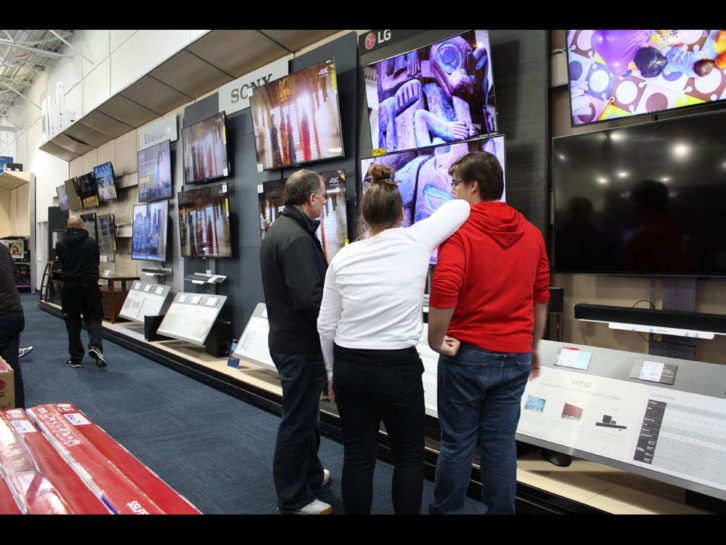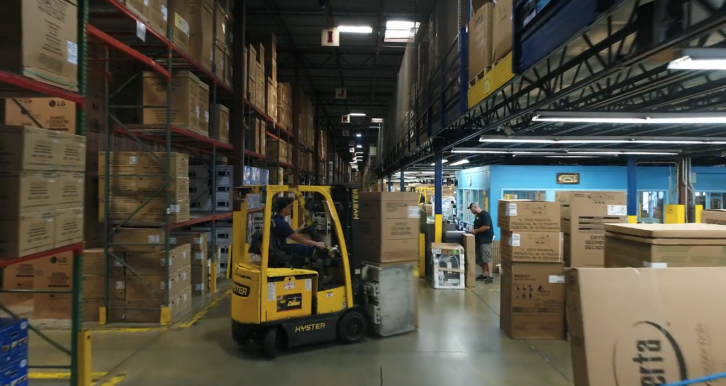 Just how will the consumer technology industry remember 2022? Considering how society seems to be recovering from the pandemic and its impact on manufacturing and supply chains, this year might be recalled as a return to normalcy.
Just how will the consumer technology industry remember 2022? Considering how society seems to be recovering from the pandemic and its impact on manufacturing and supply chains, this year might be recalled as a return to normalcy.
“Looking back to before the world turned upside down in 2020, it feels as if we’re inching closer to a normalized economy,” agrees Lee McDonald, VP of consumer electronics for the Nationwide Marketing Group. “This year has been all about resetting to the way things were before the pandemic. The strain on the supply chain is easing. Retailers can get the product they need when they need it. And consumer demand, while down from the historic highs we’ve seen, is still elevated even in the face of unprecedented inflation.”
“We starting to see many things come back to ‘normal’,” echoes Jason Horst, marketing director at Famous Tate Appliance & Bedding Centers in Tampa, FL, “but there’s still a long way to go as manufacturers deal with unexpected cost increases on key materials and components while still keeping competitive advantages in the marketplace.”
With the way the nearly dystopian 2022 opened and how the year is encouragingly ending seems to represent a reflection of a pre-pandemic world.
“Heading into 2022, we expected that supply chain bottlenecks and inflation would have a major impact on consumer technology sales,” recalls CTA’s director of industry intelligence, Rick Kowalski. “The first half of the year was marked by severe supply chain bottlenecks as the industry attempted to catch up to heightened demand carrying over from 2021. When all was said and done, supply caught up to demand, and then exceeded it. Inventories rose. The second half of the year marked the beginning of an adjustment to softened demand as a result of consumer concerns about inflation and the economy. CE retailers have been offering discounts to help clear inventory, which has fueled some early holiday deals for consumers.”
 How Consumers Are Shopping…
How Consumers Are Shopping…
“Normal,” of course, doesn’t mean a complete return to pre-pandemic business. Covid caused a cornucopia of changes in nearly every aspect of how vendors and retailers operate and conduct their business, what consumers are buying, and especially how consumers shop.
For one thing, buyers are returning, if not flocking, to brick & mortar, with “more than expected in-store shopping this holiday season than last year,” asserts Paul Gagnon, vice president and industry advisor at The NPD Group. “There is still a greater mix of online shopping than pre-pandemic, but there has been some momentum shifting back to brick-and-mortar stores where consumers can ask questions and see/touch/hear the product first-hand.”
Pandemic reliance on online shopping, however, may have dulled retailer customer acquisition efforts now needed to reach returning holiday shoppers. “The historically high demand seen during the pandemic was great for business, but it might’ve caused some retailers to get a little lazy with their marketing,” notes Nationwide’s McDonald. “Current conditions are ripe for retailers to revisit and refine those marketing strategies to ensure their businesses are being seen. They can lean into the relationships they developed with customers over the past few years. They’ve established themselves as the experts in their local communities and built trust within their market. Now’s the time to cash in on that trust and lean into those relationships to drive traffic back to their store.”
…and What Consumers Are (and Aren’t) Buying
Since consumers binged up on home office and other quarantining entertainment gear, “there just isn’t a good reason to replace that product again so soon,” NPD’s Gagnon believes. “Some still emerging product categories, like smartwatches or VR headsets, will see growth as there is plenty of adoption room left. But products like PCs and TVs, which have very high adoption and recent surges in sales, will take some time to come back into normal replacement-driven demand cycles, probably another two years or so.”
What products consumers have and will buy in Q4 and next year may have less to do with what the devices are than how much they will cost. One thing that has remained constant both pre- and post-pandemic is the ability of unique and higher-end products to withstand uncertain economic times, a phenomenon retailers should capitalize on.
“Despite inflation, some consumers are still willing to pay even more for differentiated premium products,” observes Avi Greengart, lead analyst at Techsponential. “Apple has continued to exploit its silicon advantage and differentiated software with iterative versions of its phones, laptops, and wearables. Samsung is another good example, expanding its foldable phone lineup with new Galaxy Z Flips and Folds at the same prices it charged in 2021.”
So how do vendors and retailers boost demand during a recession when most shoppers are cautious about their discretionary spending? “Now the industry must focus on enticing consumers with worthwhile upgrades and enhancements to their existing tech,” advises CTA’s Kowalski.

Supply Chain Changes?
Industry experts happily note how supply chain problems have eased. But to avoid predictable recurrences in the future, in 2022 vendors started to diversify their Chinese-centric production by moving both product and chip manufacturing to other Asian locales such as Vietnam and India, and even, thanks to the CHIPS and Science Act, back to the U.S. But, “re-shoring manufacturing is happening more in industrial goods than consumer electronics,” Greengart warns, “but vendors are definitely trying to broaden their supply chains in the Far East beyond China.” But this production diversification, Greengart adds, “takes years.”
Perhaps one of the most welcome metaphoric returns to normalcy is the physical return to trade shows, the robustness of which was “one of the most positive and surprising things this year,” according to Lew Brown, partner at bluesalve partners. “While there was still somewhat less traffic than pre-pandemic, the people that were there, were there to do business. The quality was excellent and made up for slightly less quantity.”
In essence, 2022 is a case of both returning to normalcy and adjusting to post-pandemic business changes for Q4 and beyond, all tinged with the industry’s usual guarded optimism. “I do not see any major threats to our dealers, but there are some business challenges that may impact on the aggressive growth that we have seen in the last two years,” proposes Jim Pearse, president of ProSource. “We are watching all of the impacts of higher interest rates and a slowing housing market, but to this point, the trends in our members’ business remain strong.”
See also: Last Minute Holiday Prep: What Dealers Are Doing Differently This Season













